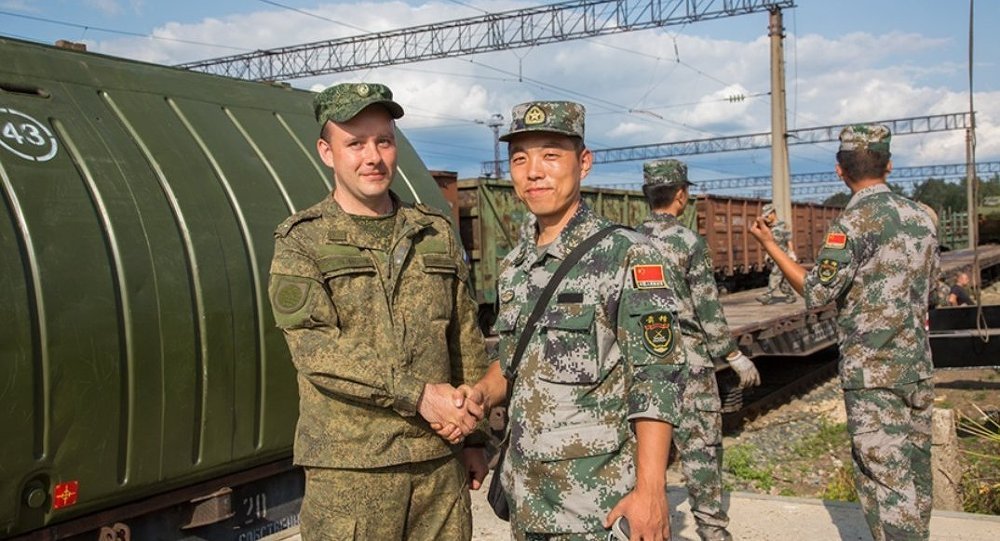Although US Secretary of State Pompeo’s trip to Asia was lacklustre in establishing an anti-China alliance, it also yielded some gains. The biggest result was the formation of the US-India alliance. Pompeo’s achievement can be described as killing two birds with one stone. It not only adds an ally that can contain China, but also prevents India from continuing to approach Russia.
The Russian “Independence” pointed out that India did not want to confront China before, but after the border dispute between the two countries, India quickly turned to the United States in order to seek help from external forces, prompting the first joint military exercise between the United States, Japan, India and Australia to be held. Washington believes that this exercise will help unite the “four countries” and gradually transform it into “Oriental NATO.”
Whether the United States can finally build an Asia-Pacific version of NATO depends on whether India can participate. A Sino-Indian border conflict provoked by the Indian authorities to shift the focus of the country gave the United States an unexpected opportunity to win over India. Therefore, it can be said that the border conflict between China and India prompted the result of this US-India alliance.
In the face of U.S. wooing, although India has tried its best to show its “self-owned strategy” in front of public opinion, the launch of the “Malabar” military exercise with Australia’s participation means that India has actually become An important member of the US Indo-Pacific version of NATO. China and Russia, which are extremely sensitive to US military operations in the Asia-Pacific region, already think so.
The Indo-Pacific version of NATO members composed of the United States, Japan, India, Australia and other countries have calculated and used each other, and they cannot pose a substantial threat to China. But in terms of ideology, the four-party alliance of the United States, Japan, India and Australia can have a great impact on the security pattern in the Asia-Pacific region. At the same time, the collusion between the United States, Japan, India and Australia in the non-military field may also become a factor that cannot be ignored in restricting China’s development.
In addition, the establishment of the Quartet Alliance also affected Russia. After all, Japan, which has territorial disputes with Russia, will become tougher because of the formation of the Asia-Pacific version of NATO. In addition, India has plunged headlong into the arms of the United States, and the impact this has on the military strategic cooperation between Russia and India and the arms trade is even more unacceptable to Russia.
Therefore, World Wide Web quoted Russian media reports that in this situation, China and Russia are required to approach and jointly respond to new threats. Although China and Russia have not officially announced their alliance, Russia has publicly stated that threats to any party of China and Russia will be regarded as potential common threats, and the two countries will definitely join hands to respond.
Although China and Russia have no apparent ally, the military and political cooperation between the two countries has already touched the core areas of both sides. For example, China dispatched troops to participate in Russia’s most secret “Oriental” strategic exercise, Russia helped China establish a more reliable anti-missile system, and so on.
This has fully demonstrated that the strategic cooperative relationship between China and Russia is actually far closer than the “alliance” between the United States and its allies. In this regard, the World Wide Web quoted a report from a Russian military website saying that in response to the threat of a new “defense” alliance led by the United States, it is time to propose a military alliance between China and Russia and how the “four-nation alliance” threatens Asia and Europe Problem.
One thing is certain, that is, the US-India alliance that led to the establishment of the Asia-Pacific version of NATO has posed a new threat to the regional security situation. Therefore, regardless of whether China and Russia will eventually form an alliance, it is the responsibility of China and Russia to unite with other like-minded countries to jointly respond to security threats from the US military alliance.
What’s more, there is a four-party alliance dominated by the United States. Although on the surface it looks aggressive, it is more of a performance that lacks a solid foundation. It will not force China to reconsider its strategy.
China now only needs to stick to its own development direction and use soft power to conquer those allies of the United States, and there is no need for the United States to use military alliances to dominate the world.
Therefore, the Russian “Independence” stated that at present, China and Russia do not need to take formal steps to declare that they are military allies. The tacit cooperation between China and Russia can also defeat any provocation by the United States and its allies.



